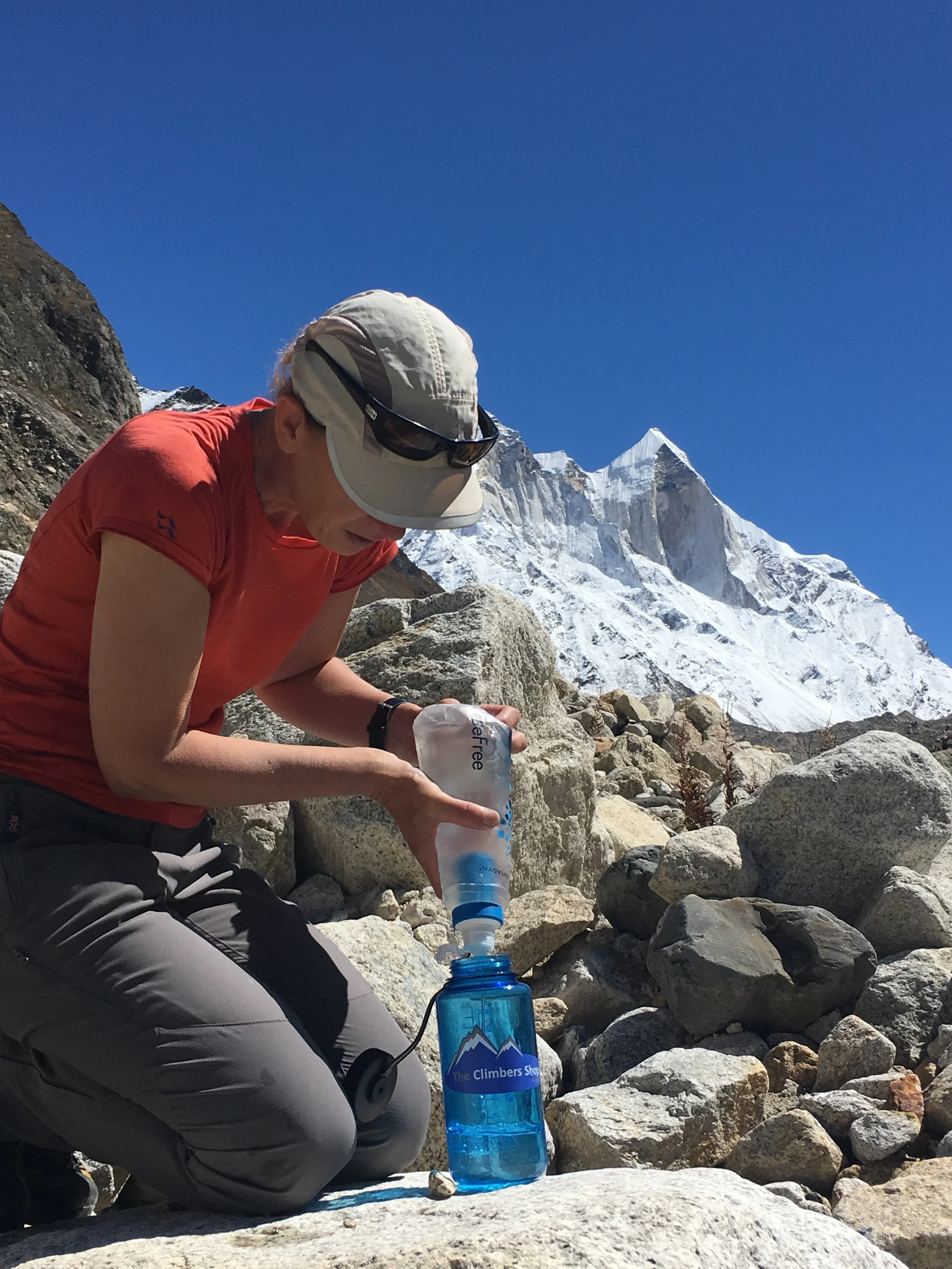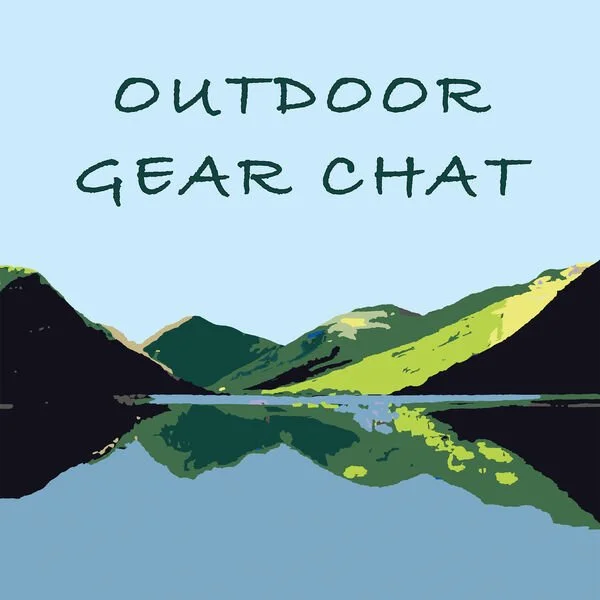Buyers Guide To Water Treatment
Water is critical for hydration but is likely one of the heaviest things we carry in the hills, so how do we carry all of that essential liquid to keep our bodies functioning and healthy? Our bodies are 60% water and if that level isn’t maintained our performance, recovery and even our decision making abilities can be affected.
Happily (unless you are in the desert) there is plenty of water for us to tap into while out and about but to ensure we can drink and cook food safely and to ensure our trips aren’t spent groaning with stomach cramps, we probably need to treat it……
What is the difference between a water filter, water purifier, UV and chemical treatment?
Each of these different options offer different levels of protection from waterborne diseases (protozoa, bacteria & viruses) Traditionally water purifiers have only been able to remove protozoa and bacteria. Viruses are microscopic so Ultra-Violet and chemical treatments have been required to kill these.
Depending where you are travelling, a filter may be as much protection as you need, however when in doubt – use a water purifier or an additional method to make your drinking water safe. Generally speaking, a filter is ideal if you are heading to a remote area. If you are travelling to a heavily populated region or you know there will be insufficient sanitary conditions then a purifier would be a better bet.
Some microfilters and purifiers contain charcoal which removes chemicals from the water and improves taste.
Portable, rechargeable Ultra-Violet devices are a great compact solution for folk travelling in urban areas as the UV light kills all protozoa, bacteria and viruses – just make sure you use it for the correct amount of time. However, UV treatment is only fully effective on clear water.
If you need to treat cloudy water it will require filtering before purifying. Chemical tablets or drops can work well for purifying afterwards – just make sure you wait the required amount of time for treatment.
Can’t I just boil it?
Yes you can, however this may not always be a practical option due to the amount of fuel and time required. If you are at high altitude, water boils at a much lower temperature which can drastically affect the length of time required to create safe drinking water and to cook food safely too.
For example; boiling water at sea level for 1 minute can kill virtually all protozoa, bacteria and viruses however, at 10,000 feet the time increases to 5 minutes.
What does gravity filtration mean?
Gravity filters can offer a good solution for larger volumes of water but most are filters – not purifiers so have their limitations. Easy to clean in the field and durable there are now also versions that can purify too. These remove viruses, bacteria, protozoa, sediment and microplastics hands-free. Simply hang it while you go about your tasks and enjoy safe water to drink and cook when required.
Where is it best to get water from?
The cleanest water is found above the vegetation or tree line. Above the habitation line there is still livestock to pollute water courses either through their manure or by dying in or close to them. Below the habitation line then purification of your water is probably best.
Wherever you get your water from, the best place to draw your water is mid-depth. Too low and you’ll drag up sediment from the bottom. Too high and the warmer surface water offers a faster growth environment for germs.
Are there waterborne diseases in the UK?
Oh yes. Lots: Weils Disease or Leptospirosis, Cryptosporidiosis, E coli, Hepatitis A, Hepatitis C, Botulism are all present in our rivers and higher up in the hills intensive farming and wild animal populations can all have an impact.
There are some great compact and lightweight filters available that fit soft flasks for runners and backpackers.
Why is it so hard to push water through my filter?
The simple answer is your filter likely needs cleaning or servicing. Just follow the instructions (which are usually ridiculously simple as most can easily be serviced in the field)
Alternatively, check to see if your filter has come to the end of its cartridge life – capacity is always shown on the packaging and instructions. Depending on the style of filter you have you may be able to buy a replacement.
Some brands also sell handy field repair kits so if you are heading into a remote area these can be a very worthy investment.
How do I look after my filter/purifier?
When you have come back from a trip make sure you pump clean water through your filter or purifier to flush out any lurking nasties. Allow it to dry completely leaving no warm moist areas for lurking nasties to multiply.
Before you head out on your next trip make sure you pump through some clean water to flush so that any bacteria which have made their home in your device are sent on their merry way allowing you to start your trip bug free.
Top Tips To Make The Right Choice…..
Think about where you are heading and the type of water you will be treating – will it be clear but dodgy hotel tap water or glacier water carrying a heavy sedimentary load?
Next think about how much water you need to treat – is it for just you or a group? This will determine weight and size.
Don’t forget, clean water is essential washing wounds. Having a packet of chemical treatment tabs in your first aid kit could prove to be a life saver.
A note on using chlorine tablets during pregnancy:
"As a general rule it appears most chlorine-based products are considered ‘safe' if used at recommended concentrations. Having said this, as with all medicines in pregnancy, there is very limited good quality evidence and uncertainty remains. It’s important that the risk of harm from chemical treatment is balanced with the risks of water borne diseases in pregnancy. In my view, whilst chlorine-based products are probably ok, filtration and boiling should be preferred options while we await more definitive answers from the scientific literature. Always refer to manufacturer's instructions." Dr Will Duffin
Listen to the expert
In episode 27 of our podcast Outdoor Gear Chat, World Extreme Medicine Joint Medical Director Dr Will Duffin tackles the murky world of water purification and how to keep healthy in the wilderness.
Learn the difference between filtration and purification, understand the different types available and why there are so many, how to choose your water source, why it's not just drinking water that needs to be pure, why you should consider carrying a form of filtration to use in the UK and how you can get clean water to drink without spending any money at all!
Not necessarily a podcast to listen to while you are eating; there is lots of discussion about "travellers tummy", the curious ability of sheep to die in a water source and how drinking your own sweat can get you out of a sticky situation.


